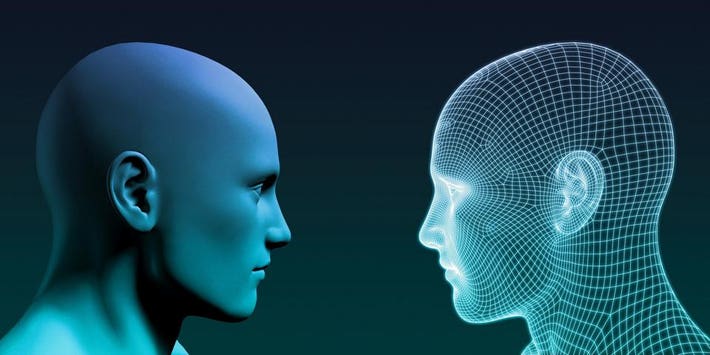Picture this: it’s late evening, a hush has fallen over your home, and you sink into the sofa, determined to read that novel you’ve been neglecting. Two pages in, your phone vibrates. A notification flashes across the screen — a friend’s Instagram story, a breaking news headline, a new message. Your hand reaches out almost before you realize it, breaking your vow of focus. Ten minutes later, you’re doom-scrolling, jumping from TikTok to email to some random Wikipedia page about the mating rituals of anglerfish.
You snap out of it, disoriented, the novel face-down beside you. The silence is gone. Your mind buzzes like a radio between stations. You wonder: What happened to my attention span?
This is the quiet, hidden epidemic of our age — the splintering of human focus in the glare of tiny screens. Across the world, billions of people carry powerful computers in their pockets, windows onto an endless universe of content. We scroll, swipe, tap. Each flicker of glass and light promises novelty, pleasure, connection. Yet many of us feel our minds fragmenting, our ability to concentrate slipping like water through our fingers.
Are smartphones destroying our attention span? Or is something deeper at work, rewiring the very architecture of our brains?
From Deep Reading to Digital Grazing
Once, not so long ago, our attention was shaped by books, newspapers, and long conversations. A book demanded immersion. The sentences unfurled slowly. A single chapter could take an hour to digest. When we read deeply, the brain’s circuitry knits connections, forging understanding. Neuroscientists have shown that sustained reading lights up networks associated with empathy, critical thinking, and memory.
But over the last fifteen years, the way we consume information has transformed utterly. In 2004, the average adult spent about an hour a day online. Today, the average American spends over seven hours a day staring into digital devices. The smartphone is the crown jewel of this shift — sleek, seductive, omnipresent.
We live in a culture of digital grazing, sampling bits of content like hors d’oeuvres at a cocktail party. TikTok videos last seconds. Tweets compress entire arguments into 280 characters. News apps blast out headlines stripped of nuance. We don’t read so much as skim, hunting for dopamine hits.
Nicholas Carr, author of The Shallows, described it perfectly: “What the Net seems to be doing is chipping away my capacity for concentration and contemplation. My mind now expects to take in information the way the Net distributes it: in a swiftly moving stream of particles.”
The Brain, Rewired
To understand what’s happening, we have to journey inside our skulls. The human brain is not a static organ. It rewires itself constantly in response to the environment — a phenomenon known as neuroplasticity. Just as a violinist’s brain devotes more space to finger movements, our digital habits reshape neural pathways.
When we scroll through smartphones, the brain rewards us with little bursts of dopamine — the same neurotransmitter linked to pleasure, learning, and addiction. Every like, notification, or message is a potential reward. This creates a “variable reward schedule,” the same principle that makes slot machines so irresistible. We swipe because we never know when the next hit will arrive.
Over time, this trains the brain to crave novelty. Long stretches of quiet focus begin to feel uncomfortable. Silence makes us fidgety. The moment boredom creeps in, we reach for the phone.
Scientists are now studying how heavy smartphone use correlates with reduced working memory, shorter attention spans, and heightened anxiety. A 2017 study published in Journal of Behavioral Addictions found that people who report high smartphone dependency perform worse on attention-switching tasks. Another study in NeuroRegulation suggested that notifications alone — even those we ignore — can impair focus, leading to reduced performance on cognitive tasks.
We are becoming digital hummingbirds, darting from one flower of information to another, rarely pausing to taste the nectar deeply.
The Economics of Distraction
This is not an accident. Entire industries depend on capturing and monetizing our attention. The modern internet runs on an economy of engagement. The longer you stay glued to your screen, the more data is harvested, the more ads are shown, the more revenue flows.
The titans of Silicon Valley — Facebook, TikTok, YouTube, Instagram — deploy teams of behavioral psychologists to design interfaces that keep us scrolling. Infinite feeds, autoplay videos, algorithmic recommendations — these are not innocent design choices. They’re precision tools crafted to exploit the brain’s vulnerabilities.
Former Google designer Tristan Harris calls it the “race to the bottom of the brain stem.” The platforms compete to evoke the strongest emotional reaction — outrage, fear, laughter — because those emotions keep us hooked.
Consider notifications. A red badge icon triggers the brain’s threat response, suggesting something urgent awaits. The color red is not accidental. It’s a visual siren. And so, even when we’re trying to focus on work, the lure of “just checking” becomes irresistible.
This is why so many of us sit down to write an email and emerge twenty minutes later having accomplished nothing except spiraling through social media rabbit holes.
Children of the Digital Age
Nowhere is the question of attention more urgent than among children and teenagers. Today’s young people have never known a world without smartphones. Many get their first device before the age of 12. Schools, under pressure to modernize, increasingly integrate digital devices into classrooms.
But there’s mounting evidence that constant digital stimulation may hinder children’s ability to develop sustained focus. Studies show that students who frequently text or check social media during lectures score lower on tests and retain less information. Teachers report rising difficulties in maintaining classroom attention.
Jean Twenge, psychologist and author of iGen, describes a generation shaped by screens: “They are less likely to read books, less likely to go out without their parents, less likely to sleep enough. They’re more likely to be anxious and depressed.”
It’s not just the content that matters, but the very habit of constant switching. Childhood and adolescence are critical periods when the brain’s executive functions — impulse control, delayed gratification, sustained attention — are maturing. If young people rarely practice sustained focus, will those neural pathways fail to develop fully?
The Illusion of Multitasking
Many believe they can handle constant digital input because they’re skilled multitaskers. But research shows that multitasking is largely a myth. The brain cannot perform two complex tasks simultaneously. Instead, it rapidly switches back and forth, burning mental energy with each transition.
David Meyer, a cognitive scientist at the University of Michigan, has found that task-switching can cost up to 40% of productive time. Each interruption leaves a “cognitive residue,” a mental echo that makes it harder to return to the original task.
Smartphones, with their buzzing alerts, are perpetual interruption machines. Even when silent, their mere presence reduces cognitive capacity. A study from the University of Texas found that having a phone visible on a desk — even facedown — reduces working memory and problem-solving ability. It’s as though part of the brain is perpetually devoted to resisting the lure of the device.
This may explain why so many of us feel exhausted after a day of constant phone use. Our brains are burning energy to manage a ceaseless flood of micro-interruptions.
Attention: The Hidden Cost
Attention is not merely a cognitive skill. It’s deeply linked to our emotional and spiritual lives. When we lose the ability to focus, we lose more than productivity. We lose moments of reflection, empathy, and creativity.
Many artists and writers speak of “deep work” — long, uninterrupted periods when they enter a state of flow. Ideas blossom. Connections emerge. But flow requires sustained attention. Constant interruptions keep us skimming the surface of thought, never plunging into deeper waters.
Cal Newport, author of Deep Work, argues that our greatest contributions — art, science, innovation — arise from focused concentration. He warns that the modern workplace, awash in emails and instant messages, is hostile to such focus.
Moreover, shallow attention fragments our emotional lives. Relationships become mediated through texts and emojis. Conversations are interrupted by notifications. We become present physically but absent mentally.
Perhaps this is why so many people report feeling lonely, even when hyper-connected. We live surrounded by digital chatter, yet starved for true presence.
An Ancient Mind in a Digital World
It’s easy to blame technology. But part of the problem is that human brains evolved in a world radically different from our own. Our ancestors lived amid sparse information. A rustle in the grass might be a predator — so the brain evolved to be highly sensitive to new stimuli.
That same circuitry now makes us vulnerable to the endless novelty on smartphones. A new notification triggers the brain’s ancient alert system, demanding our immediate attention.
We carry Stone Age brains into a digital age. Our biology has not caught up with our inventions.
The Paradox of Connection
Yet we must also acknowledge the paradox. Smartphones have brought immense benefits. They connect families separated by oceans. They democratize information. They offer tools for learning, health, and creativity. For many marginalized communities, digital platforms amplify voices that were long unheard.
During the COVID-19 pandemic, smartphones became lifelines. They enabled remote work, education, and connection in a time of isolation. For people with disabilities, smartphones can open doors previously closed.
Thus, the question is not simply: Are smartphones evil? It’s more nuanced: How can we wield these powerful tools without letting them fracture our minds?
Searching for Balance
There’s no single answer. But the conversation has begun to shift. Parents are rethinking how early they give smartphones to children. Schools are experimenting with “phone-free” policies. Companies like Apple and Google have introduced digital wellness features that track screen time and allow users to block distracting apps.
Some people embrace “digital minimalism,” carving out phone-free hours. Others experiment with dopamine detoxes, cutting off social media for days or weeks to reset their brain’s reward system.
Yet even among those who try to reduce their phone use, many admit they feel drawn back. It’s hard to resist a device that promises connection, information, and entertainment in a single glowing rectangle.
A Glimpse of the Future
Technology is not standing still. As AI evolves, smartphones are becoming even more personalized, anticipating our needs and desires. Wearables, AR glasses, brain-computer interfaces — the next wave of tech promises even deeper integration with our minds.
If we already struggle to control our attention in the smartphone era, what happens when technology is literally in our field of vision all day? Or when AI assistants learn to manipulate our emotions for profit?
The stakes are rising. As the boundaries between human thought and machine input blur, preserving our capacity for sustained attention may become the ultimate act of resistance.
A Final Reflection
So are smartphones destroying our attention span? The evidence suggests they are certainly changing it. Our brains adapt to the environments we inhabit. A world of constant pings and flickering screens trains us for speed, novelty, and surface-level engagement. It erodes our tolerance for silence, patience, and depth.
Yet we are not powerless. We are the authors of the next chapter. We can choose to reclaim moments of stillness. We can put the phone down and allow boredom to breathe creativity back into our lives. We can remember that attention is finite — a precious human gift.
In the quiet spaces left behind when the screen goes dark, there lies a deeper awareness, a chance to reconnect with ourselves and each other.
The novel is still waiting on the sofa. The world outside the glass screen still sings with color, scent, and texture. And our minds, though battered by the digital tide, remain capable of wonder — if only we give them the chance to wander.






